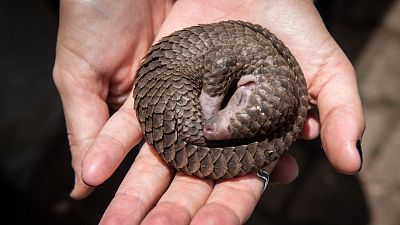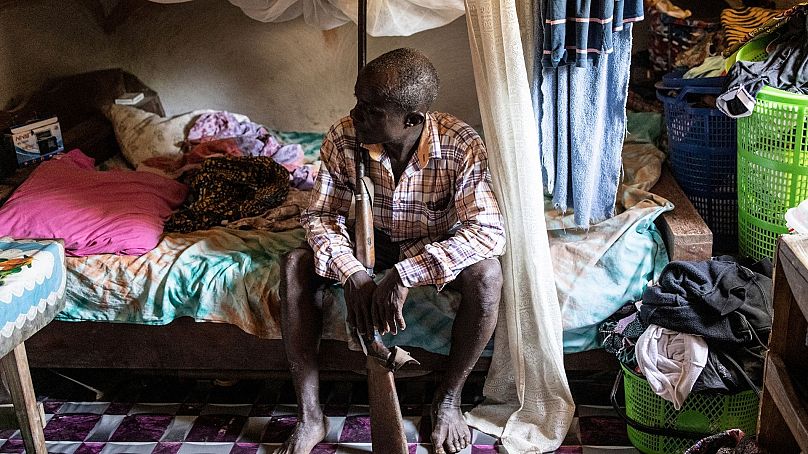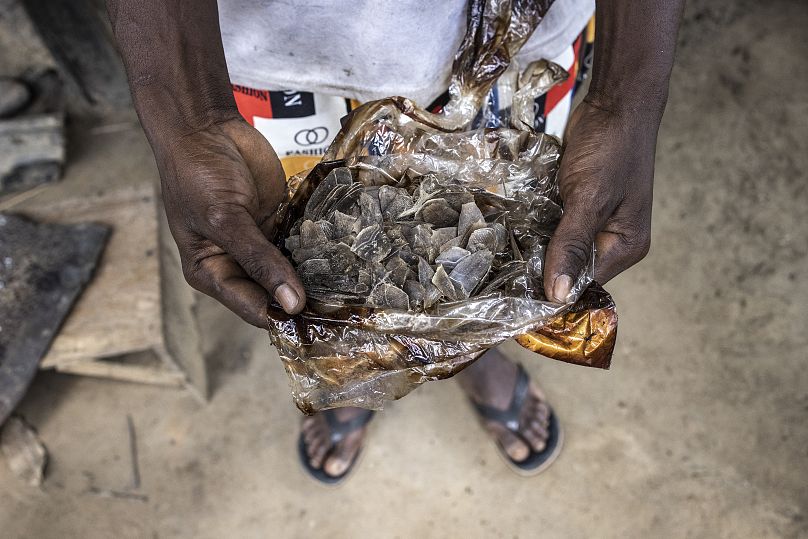The numbers that expose the horrifying extent of the UK’s rape crisis: The government is failing women
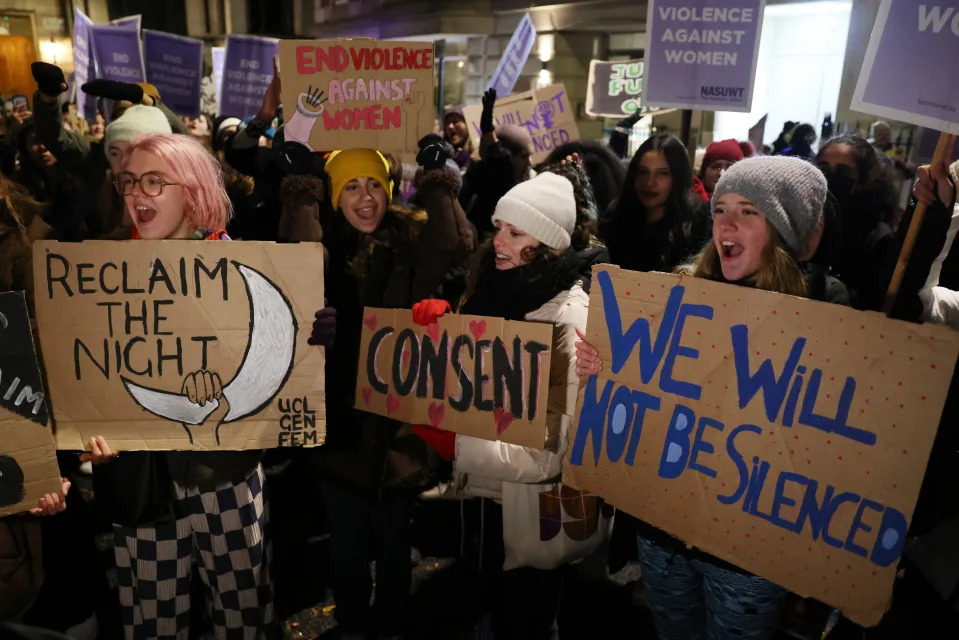
Women carry placards during the London Reclaim the Night march, protesting against sexual violence, and violence against women and girls. (Hollie Adams/Getty Images)
In June 2021, the government apologised to rape victims.
Launching an "end to end" review of how cases of sexual assault and violence are handled, ministers said they were "deeply ashamed" of the way survivors had been failed and let down.
The then justice secretary Robert Buckland acknowledged "systemic failings" meant victims, most of whom are women, were not seeing justice, and pledged that he "would not rest until real improvements are made."
As part of the rape review, the government promised a "reversal of the trends of the last five years", pledging to return the number of cases prosecuted to the levels seen in 2016/17.
Despite these promises, the latest data shows that little has improved for victims, with experts warning that "the picture for how rape is treated in the criminal justice system remains the same".
The scale of the issue is huge, with analysis of official statistics suggesting that hundreds of thousands of women were raped last year. However, a lack of confidence in the system means that only a small proportion of victims come forward.
Yahoo News UK has analysed the latest data, finding that the justice system is showing no signs of improving.
Reported rapes higher than ever
The number of rapes and sexual assaults recorded by police in England and Wales are at a record high, according to the latest data from the Office for National Statistics (ONS).
Some 170,973 sexual offences were recorded by police in the year to September 2021, 63,136 of which were rape.
This represents a 12% year-on-year increase in the the number of recorded sexual offences.

Recorded rapes in England and Wales are at a record high (Yahoo News UK/Flourish/ONS)
According to the ONS, there are multiple likely factors behind the the increase, including an increase in the number of victims, as well as the impact of high-profile incidents, such as the rape and murder of Sarah Everard at the hands of serving Metropolitan Police officer Wayne Couzens.
Such incidents can encourage members of the public to come forward and report crimes they have experienced.
The ONS cautions that the figures are by no means a true representation of the scale of the problem, with data suggesting that fewer than one in six victims of rape or assault by penetration report the crime to the police. This suggests that more than 350,000 people were raped in England and Wales last year.
And, for the victims who do come forward, more often than not their bravery is not rewarded.
Almost all rape reports do not result in a charge
On the same day the ONS released its record figures, Home Office statistics revealed the proportion of reported rapes leading to a charge is lower than ever.
In the year to September 2021, fewer than one in 75 of reported rapes led to a charge.
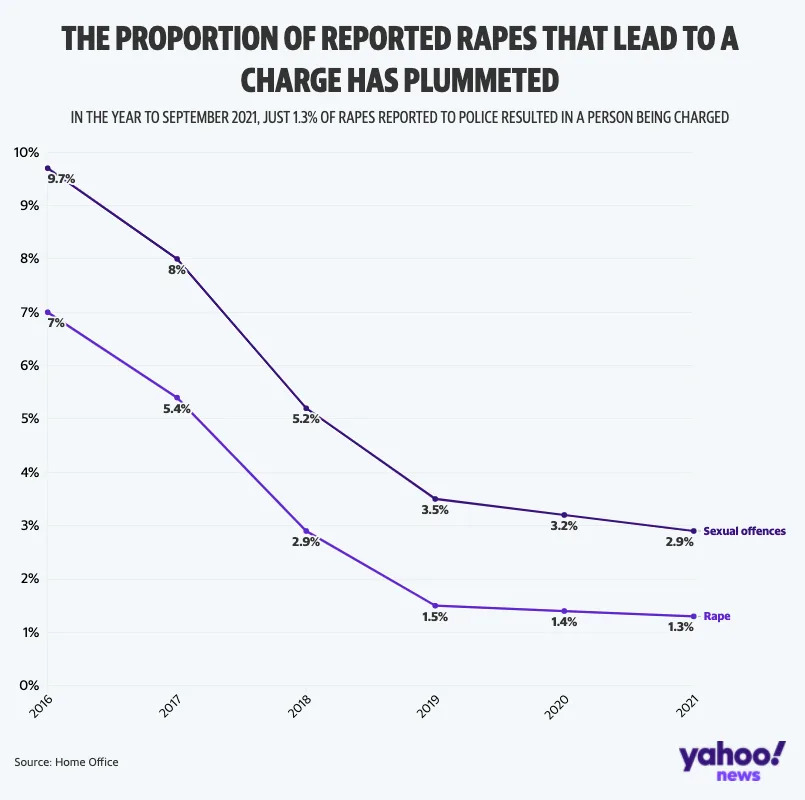
Less than one in 75 reported rapes lead to a charge in 2021 (Yahoo News UK/Flourish/Home Office)
The proportion dropped from 9.7% in 2016 to 1.3% in 2021, the lowest figure ever recorded.
Shadow home secretary Yvette Cooper called the latest figures "truly appalling".
"Shocking crime figures out today show the rape prosecution rate has got even worse." she said.
"The Conservative government is completely failing to tackle violence against women and girls."
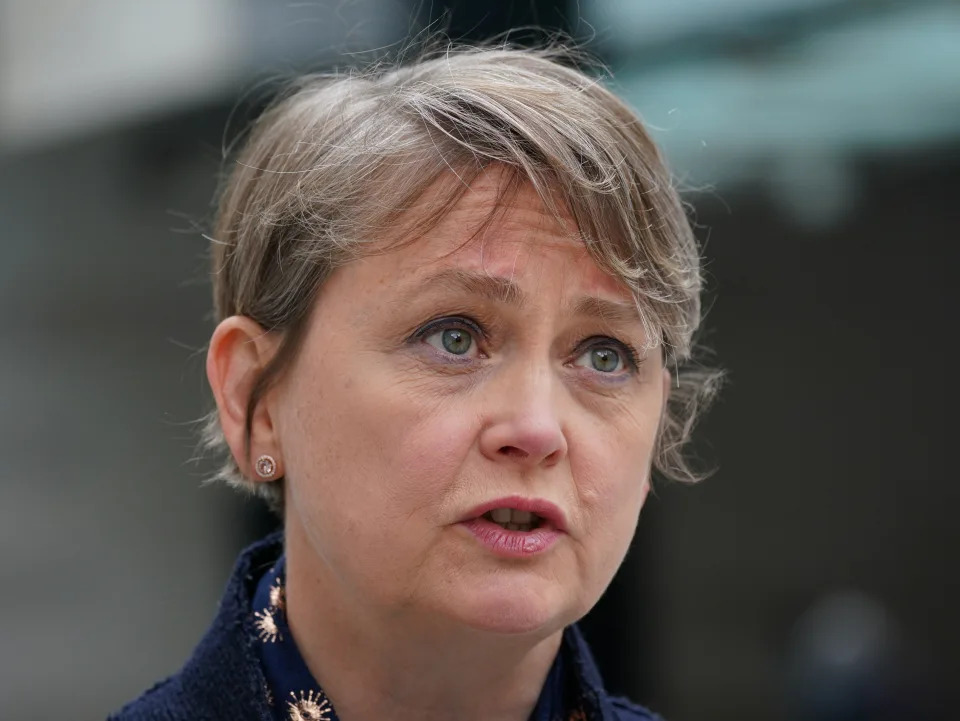
Shadow home secretary Yvette Cooper called the latest Home Office figures on rape prosecutions "truly appalling". (PA Images)
The woeful numbers of prosecutions for rape prompted the victims' commissioner to say that rape has been "effectively decriminalised".
In her 2019/20 report, Dame Vera warned: "We are enabling persistent predatory sex offenders to go on to reoffend in the knowledge that they are highly unlikely to be held to account."
Since she wrote the report, the prosecution rate has dropped further.
Furthermore, Home Office data shows that a large proportion of cases are being dropped because the victim withdraws their support.
This, according to Dame Vera, is often because "they cannot face the unwarranted and unacceptable intrusion into their privacy".
The rape review included promises to make the process of reporting a rape less traumatic for victims, such as ending the practice of the "digital strip search" of all their communication, and returning their phone within 24 hours.
Despite this, in 2021, two in five rape offences (42%) were closed because the victim did not support further police action.
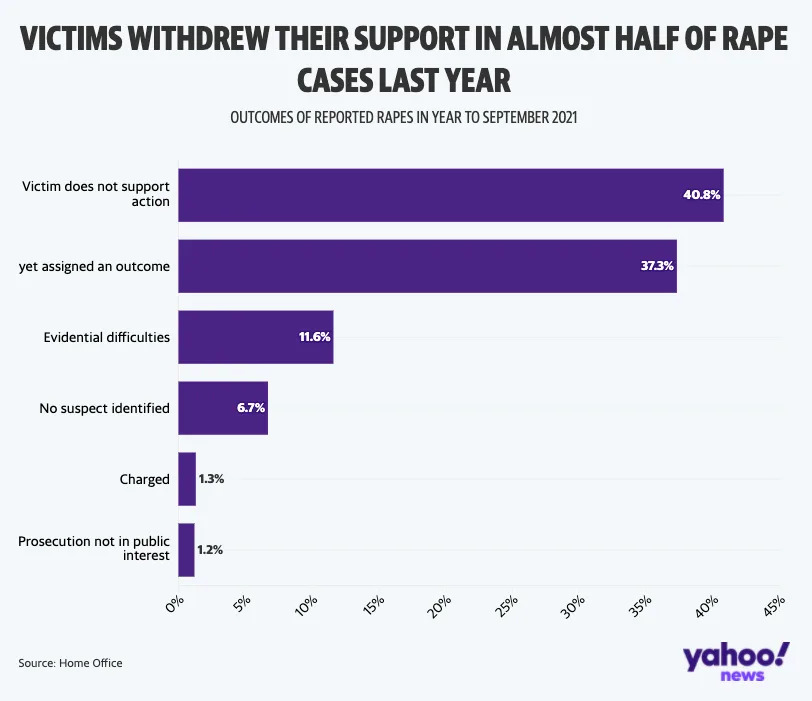
Victims withdrew their support in almost half of rape cases in the year to September 2021 (Yahoo News UK/Flourish/Home Office)
The rape review pledged to bring prosecutions and conviction numbers back to levels recorded in 2016.
The latest data from the CPS shows that, while there have been small increases in the overall numbers since 2020, these are far below the level needed to meet the government's own targets.
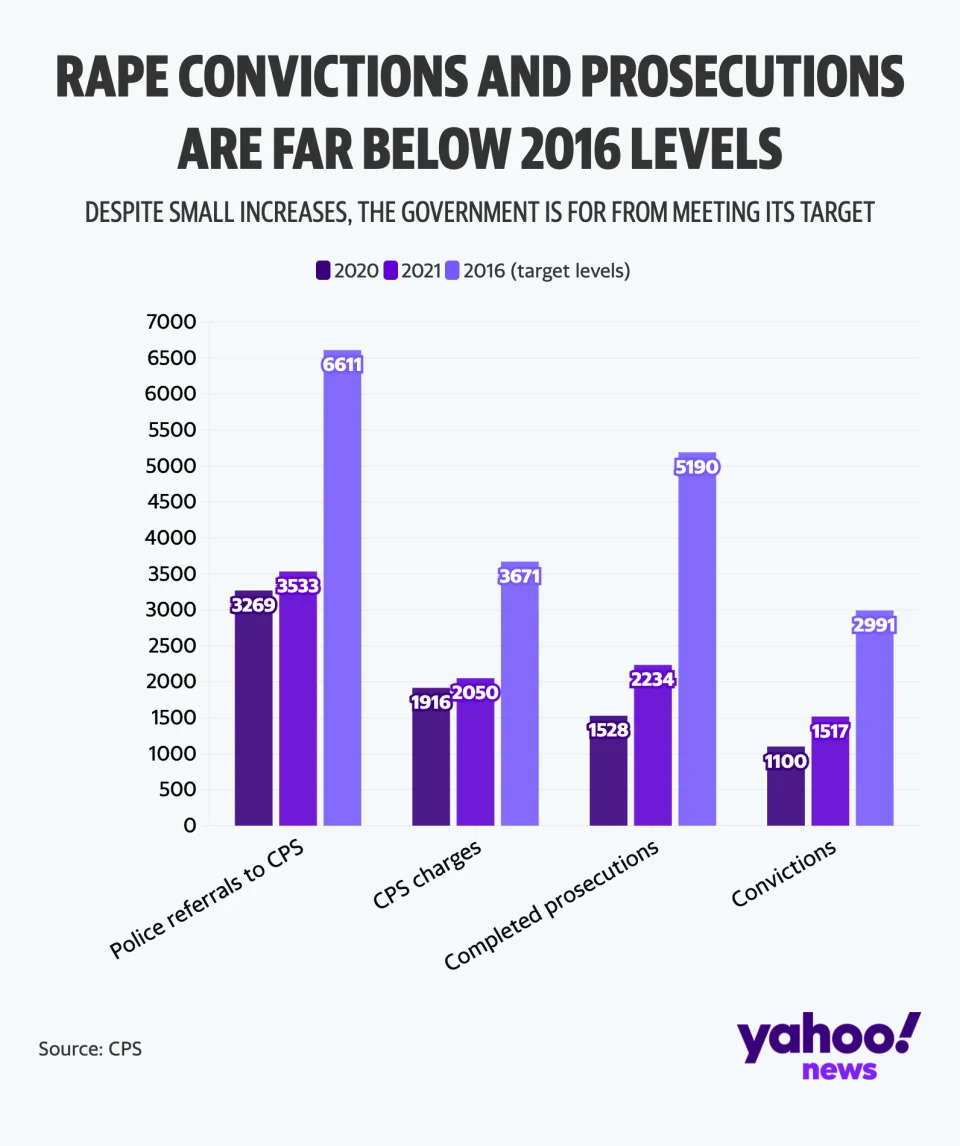
Rape prosecutions and convictions are far below 2016 levels (Yahoo News UK/Flourish/CPS)
The true extent of rape
While police recorded cases of rape make for concerning reading, research by the ONS suggests these represent just 17% of rapes taking place, due to victims' reluctance to come forward.
The most recent Crime Survey for England and Wales found that fewer than one in six victims reported the assault to the police.

Boris Johnson says he cannot guarantee Rape Review targets to improve prosecution and conviction rates will be met by 2024
Boris Johnson has said he cannot guarantee that targets to improve rape prosecution and conviction rates set out in the government's Rape Review will be met.
An ONS spokesperson said: "Sexual offences are often hidden crimes that are not reported to the police.
"Therefore, data held by the police can only provide a partial picture of the actual level of crime experienced.
And, while younger women were more likely to be a victim of rape or sexual assault, they were less likely to report the crime.
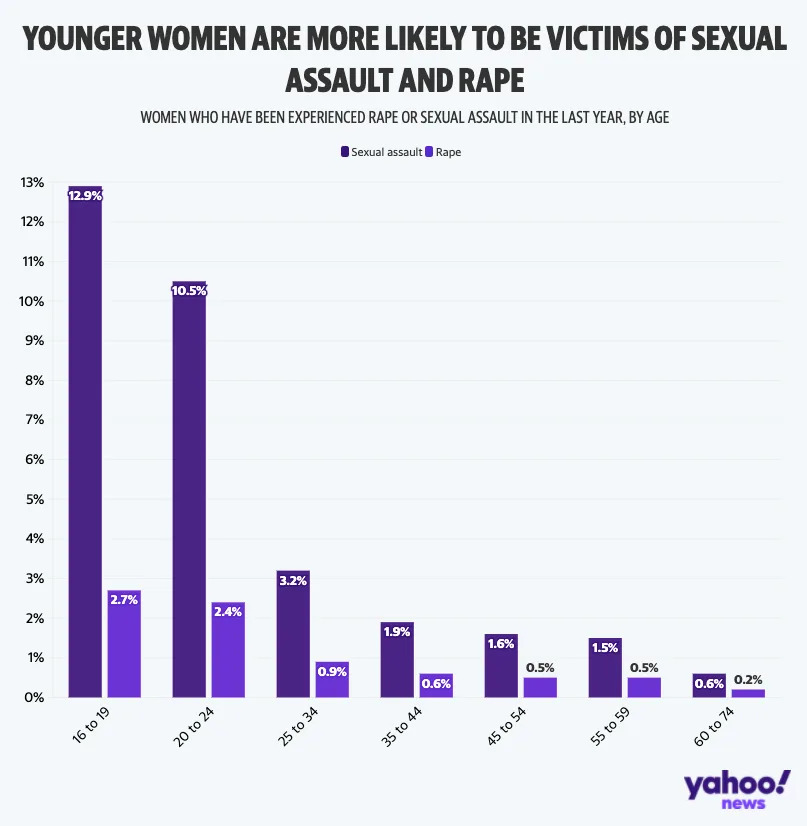
Some 12.9% of women aged 16 to 19 experienced sexual assault in the year to March 2020 (Yahoo News UK/Flourish/ONS)
In for the year ending March 2020, 12.9% of women aged 16 to 19 reported being a victim of sexual assault, and 2.7% reported being raped.
However, just 10% of 16 to 19-year-olds reported their assault to the police, compared with 27% of 35 to 44-year-olds.
The reasons cited by women for not reporting their crimes reveal a deep mistrust in the police to properly handle their case.
Asked their reasons for not reporting to the police, a shocking 25.2% said they didn't think officers would believe them.
Some 38.7% said they didn't think the police could help, and 14.9% thought the police would not be sympathetic.
Almost a third of women who were raped, 30.9%, didn't tell anyone at all, with 45.6% citing embarrassment, and 24.8% saying they didn't think anyone would believe them.
Since this research was conducted, women's mistrust in police has worsened.
In a poll conducted after the rape, kidnap and murder of Sarah Everard by serving Met Police officer Wayne Couzens, nearly have of women said they had lost trust in the police.

The case of Sarah Everard, who was kidnapped, raped and murdered by serving police officer Wayne Couzens, has damaged women's trust in policing, polls show (PA Images)
Rebecca Hitchen, Head of Policy and Campaigns at the End Violence Against Women Coalition (EVAW), said: “Our justice system is broken and failing women. Despite continuous promises to improve and targets to meet, the system is completely stagnant when it comes to rape. Likewise, the alarming downward trajectory in charging, prosecuting and convicting in cases of domestic abuse requires urgent and serious attention.
"We can’t talk about rebuilding women’s trust in the police and justice system while there is no tangible positive change to the things that matter – seeing justice and getting the specialist support survivors need.
"Almost one year on from the public outcry following Sarah Everard’s murder, very little if anything has changed in the response to violence against women. Once again we’re calling on the government and CPS to give this deeply unjust issue the attention it warrants, demonstrate strong leadership and ensure proper accountability.”
A government spokesperson told Yahoo News UK: “We are committed to restoring faith in the justice system for rape victims.
"We are recruiting 20,000 police officers and more Independent Sexual Violence Advisors while consulting on a Victims’ Law – delivering on our commitment to transform our entire response to rape.”
"We are also sparing rape victims the stress of testifying in court, making investigations less intrusive for victims and have introduced new justice scorecards to hold justice agencies to account."





















